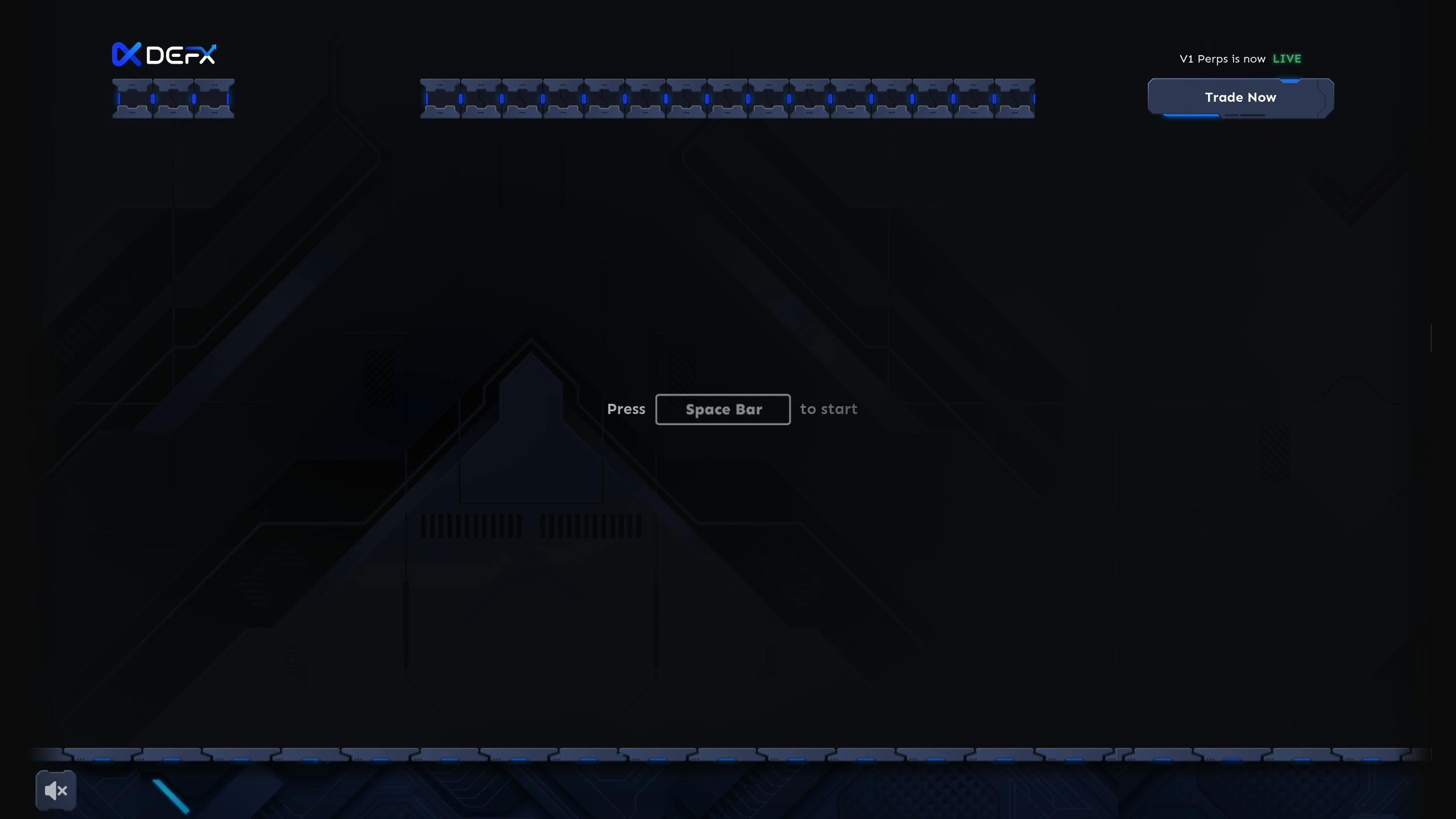High-leverage crypto trading is risky – confirmation bias makes it worse. Traders using 50x or higher leverage are 73% more likely to ignore opposing signals, leading to poor decisions and liquidations. Here’s how to avoid it:
- Key Risks: Emotional decisions, ignoring data, doubling down on losses.
- Solutions: Use pre-trade checklists, structured rules, and tools like stop-loss orders.
- Impact: Traders with systematic approaches see 41% fewer liquidations and 29% better returns.
Start by questioning your assumptions, analyzing opposing data, and managing risk with clear entry/exit rules. Tools like Defx can help detect bias and enforce discipline. High-leverage trading requires objectivity – stay systematic to succeed.
How Confirmation Bias Affects Leverage Trading
Understanding Confirmation Bias
In crypto trading, confirmation bias shows up when traders focus only on information that supports their current positions and ignore anything that contradicts them. A striking example comes from the 2024 Bitcoin ETF approvals, where 43% of traders using 25x or higher leverage ignored clear sell-off signals after the news broke [4].
Here are some common ways confirmation bias affects trading:
| Behavior Pattern | Impact on Trading | Risk Level |
|---|---|---|
| Cherry-picking Technical Indicators | Overlooks conflicting signals | High |
| Ignoring Fundamental Changes | Misses important market shifts | Severe |
| Rationalizing Losses | Blocks strategy adjustments | Critical |
| Doubling Down on Positions | Deepens existing losses | Extreme |
How Leverage Intensifies Bias
High leverage creates intense pressure, making confirmation bias even worse. Research from IG shows that traders using leverage above 20x face a 63% higher chance of liquidation, often due to decisions driven by emotion rather than logic [7][8].
The higher the leverage, the more biased decisions become. For example:
- At 25x leverage, traders are twice as likely to make biased decisions compared to those at 10x.
- At 50x leverage, this jumps to 3.8 times more bias [7][8].
Why does this happen? Cognitive studies reveal that stress from high leverage cuts analytical thinking by 40% [3]. This mental strain leads to a chain reaction of poor choices.
Take Defx traders using 50x leverage – many double down on losing trades instead of reevaluating their strategy [6][8]. Similarly, Solana traders with 50x leverage often ignore conflicting on-chain metrics when their positions go south. These patterns show how confirmation bias can spiral out of control, emphasizing the importance of tools like pre-trade checklists, which we’ll explore in the next section.
Pre-Trade Checklist
Clear Entry Rules
Having specific entry criteria is key to avoiding emotionally-driven mistakes in high-leverage trading. Studies indicate that traders who stick to strict pre-trade rules are 63% less likely to make decisions that lead to liquidations [7].
| Indicator Type | Minimum Requirement | Risk Level Check |
|---|---|---|
| Trend Confirmation | Price above 200-MA (4h) | Primary |
| Momentum Check | RSI < 30 (oversold) | Secondary |
| Volume Validation | 150% above 20-period average | Critical |
| Volatility Assessment | ATR-based leverage caps | Essential |
Volatility-Based Leverage Limits:
- Low volatility (ATR <$300): Up to 30x leverage
- High volatility (ATR >$800): Up to 15x leverage [2]
Check Opposing Data
Before finalizing any high-leverage trade, it’s crucial to analyze opposing evidence. Professional traders spend 80% of their pre-trade preparation questioning their initial assumptions [3].
"One trader avoided liquidation by reducing a planned 50x ETH long position by 80% after reviewing counter-signals, just before prices reversed."
Key areas to double-check include:
- Market Structure: Look at funding rates and exchange reserves to spot overcrowded positions.
- Timeframe Validation: Ensure signals align across daily and 1-hour charts.
- Liquidity Mapping: Identify liquidation clusters close to your entry points.
Platforms like Defx simplify this process with tools such as:
- Multi-source oracle price feeds to avoid reliance on a single liquidity pool.
- Historical liquidation heatmaps to pinpoint risk zones.
- Cross-platform funding rate comparisons to detect market imbalances [9].
Trade Management Steps
Position Size and Risk Limits
Experienced traders determine position sizes by risking just 1-2% of their account per trade, divided by the stop-loss distance.
| Volatility Level | Recommended Leverage | Margin Buffer | Max Position Size | Bias Protection |
|---|---|---|---|---|
| Low (<5% daily) | Up to 30x | 10% | 2% account risk | Prevents overconfidence |
| Medium (5-10%) | Up to 20x | 15% | 1.5% account risk | Reduces emotional reactions |
| High (>10%) | Up to 10x | 20% | 1% account risk | Encourages objective decisions |
These guidelines act as guardrails, helping traders avoid doubling down on emotional or biased decisions.
Stop-Loss and Profit Targets
Automated exit strategies are key to removing emotion from trading decisions. As one professional trader explains:
"Using volatility-based indicators like Average True Range (ATR) helps set stop-loss distances objectively, removing emotional attachment to specific price levels while respecting market conditions." [3]
For managing risk in leveraged trades, follow these steps:
- Set your initial stop-loss at 1.5x ATR below the entry price for long trades.
- Aim for a risk-reward ratio of 2:1 or 3:1.
- Use trailing stops that adjust as the trade moves in your favor.
Platforms offering volatility-adjusted calculators and automated triggers can help enforce these rules without manual intervention.
When handling profitable trades:
- Take 50% profit at a 1:1 reward ratio.
- Move the stop-loss to breakeven.
- Let the rest of the position run with a trailing stop. [5]
This structured approach eliminates guesswork and counters confirmation bias by setting clear exit rules in advance.
sbb-itb-dd9e24a
The Danger of Confirmation Bias When Trading – And How to Fix It
Learning from Trade Results
Executing trades with discipline is just the beginning. The real insights come from analyzing your results afterward. Regular post-trade reviews help uncover patterns of confirmation bias that you might miss in the heat of the moment.
Trade Journal Methods
A well-organized trade journal is your first line of defense against confirmation bias. Professional traders rely on detailed journaling to record decisions before knowing the outcomes. The goal? Capture your entire thought process, not just the technical details.
| Journal Component | Required Details | Why It Matters |
|---|---|---|
| Pre-Trade Analysis | Timestamped entry, chart screenshots | Stops you from rationalizing after the fact |
| Entry Rationale | Specific technical/fundamental reasons | Keeps your original thesis documented |
| Risk Parameters | Position size, leverage level | Ensures you stick to your rules |
| Emotional State | 1-5 scale rating, e.g., "FOMO influenced position sizing" | Tracks psychological influences |
| Market Context | On-chain data, exchange flows | Reduces hindsight bias |
For better objectivity, make sure to log emotional states and any external pressures that may have affected your decisions.
Failed Trade Analysis
When a trade goes south, it’s essential to review it systematically. This helps you identify and address confirmation bias. A helpful tool for this is the PROOF framework:
- Premise validation: Did your original thesis align with reality?
- Risk assessment: Did you follow your risk rules, or were they altered by emotions?
- Opposite analysis: What bearish signals did you overlook?
- Outcome drivers: What actually moved the market versus what you expected?
- Future prevention: Note specific biases to avoid in similar scenarios.
Platforms like Defx can enhance this process by integrating blockchain analytics. For example, you can verify your trade decisions by cross-referencing them with exchange netflows, smart money activity, and funding rate discrepancies. This data gives a clearer picture of market dynamics during your trade.
One metric to watch closely is your confirmation ratio: (confirming signals noted) / (total available signals). If this ratio exceeds 70%, it’s a red flag for strong confirmation bias [3]. Defx’s performance analytics module can calculate this and other bias-detection metrics automatically, helping you stay grounded in your analysis.
For trades that were emotionally charged, wait at least 72 hours before reviewing them. This cooling-off period allows you to separate emotions from facts, making it easier to objectively assess what really went wrong.
Tools to Reduce Trading Bias
Using the PROOF framework for post-trade analysis, these technical tools help traders stay objective during active trading:
Defx Trading Tools

Automated alerts in Defx tools help spot common blind spots by tracking:
| Alert Type | Function | How It Helps |
|---|---|---|
| Divergence Detection | Highlights mismatches between price and volume | Avoids misinterpreting selective data |
| Multi-Indicator Conflicts | Flags when 3+ technical indicators disagree | Encourages reviewing opposing signals |
| Funding Rate Shifts | Tracks sudden changes across exchanges | Exposes shifts in market sentiment |
The non-custodial design ensures traders manually review decisions instead of making impulsive moves [11][10].
Multi-Source Data Checks
Leverage three types of data for better decision-making:
A recommended data verification process includes:
| Data Source | Key Metrics | How to Use |
|---|---|---|
| Price Action Validation | ±2% interval alerts with volume confirmation | Set automated alerts requiring a 15% volume spike |
This approach has shown measurable results:
- A 30% drop in trades closed too early
- A 2:1 ratio of data sources consulted per trade decision [3][10]
To strengthen these checks, integrate Defx alerts with external tools designed to detect bias [5][10][12]. Configure your dashboard to show conflicting technical analyses side-by-side. This setup forces you to actively evaluate opposing signals before making a trade, helping you stay objective even in unpredictable market conditions.
When paired with journaling techniques from Section 4, these tools contribute to a more disciplined and impartial trading system.
Summary
High-leverage trading requires careful management of bias, achieved through structured and systematic methods. A successful approach to minimizing bias includes:
| Component | Implementation | Impact Metric |
|---|---|---|
| Multi-Source Analysis | 60% technical, 30% fundamental, 10% sentiment checks | 3:1 profit target vs. early exit ratio |
| Automated Risk Management | Trailing stop-loss orders at key levels | 55%+ win rate across market conditions |
To stay consistent, use the checklist methods outlined in Sections 2-4. Schedule focused analysis sessions and implement DEX-enforced position limits. For platforms like Defx (covered in Section 5), set up automated alerts to catch divergence signals and multi-indicator conflicts. Additionally, maintain detailed trade journals to monitor both technical and emotional aspects of your trades [4][3].
In high-leverage environments, confirmation bias poses a serious risk, especially under pressure, where traders may interpret data selectively. A systematic approach – relying on diverse data sources and automated risk management – helps traders stay objective, even in volatile markets [1][9].
